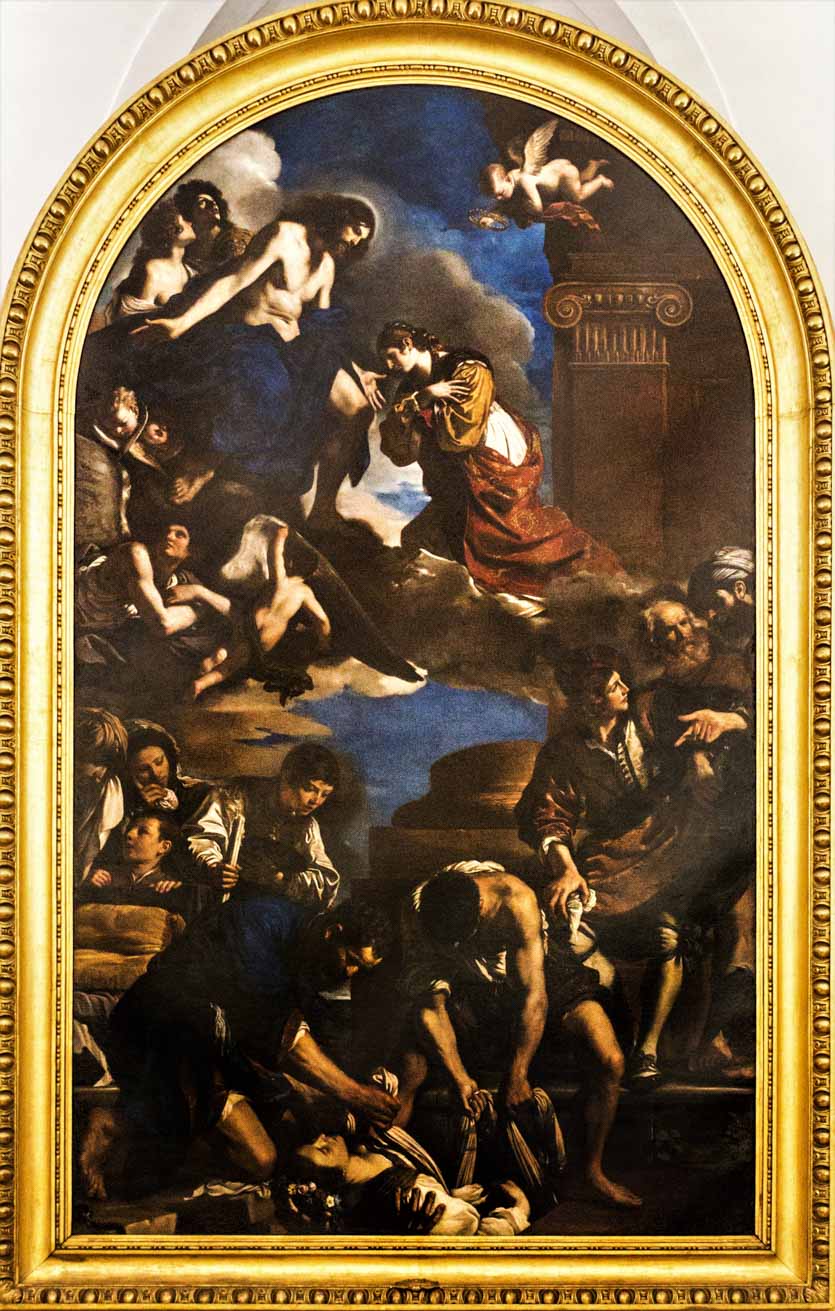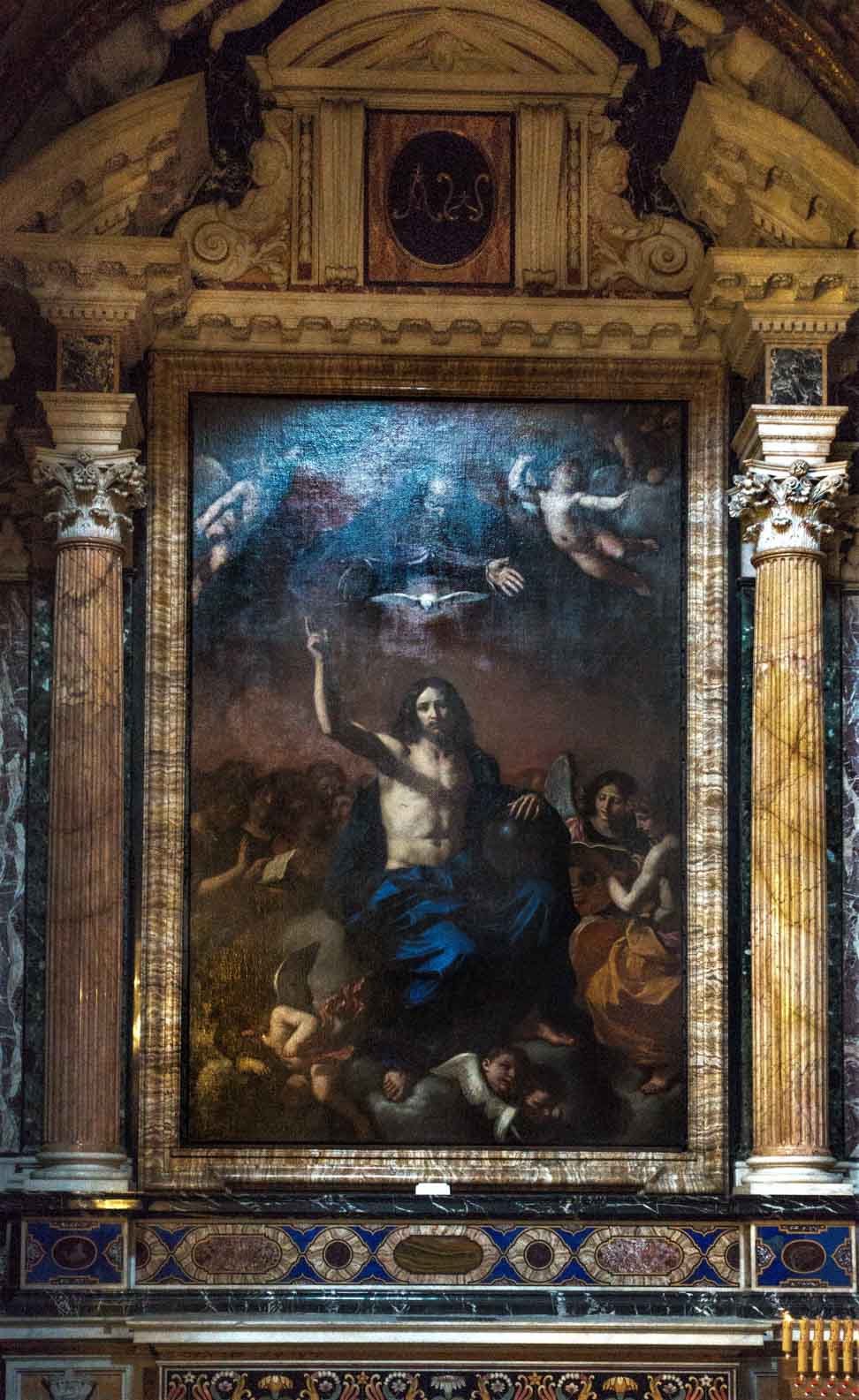Guercino (1591–1666) – short career of the Pope’s chosen one in Rome

At that time in Rome, Domenichino was considered a master of unparalleled skill. An attempt to compete with him turned out to be successful, as a year after arriving at the Eternal City Guercino presented his fresco Aurora (Casino Ludovisi). In it Guercino topped Domenichino’s classical style with expression, movement and exceptional coloring, but especially quadrature used in an expert way, which allowed him for almost equilibristic perspective foreshortenings. He also turned out to be a worthy competitor to Guido Reni himself, who had worked on the same theme a few years earlier at Casino dell’Aurora.
In time Guercino became one of the most significant Baroque artists of the first half of the XVII century, an author of frescos, altar paintings, private masterpieces and drawings. He was able to display his mastery in completing a monumental painting depicting the burial of the daughter of St. Peter – St. Petronilla. This painting, at first destined to adorn St. Peter’s Basilica (San Pietro in Vaticano) and completed at the commission of Gregory XV, can currently be found in the collections of the Capitoline Museums.
Initially Guercino’s paintings were based on definite chiaroscuro contrasts. However, after coming to Rome his style changed – a harmonious, almost Venetian coloring started to dominate, which was supplemented by perfect drawing.
Unfortunately after a short pontificate of Gregory XV the star of Guercino was extinguished and commissions stopped coming The procedure of papal favorites losing commissions at the moment of the death of their patron was something natural, that is why the next pope, Urban VIII, just as his predecessor had done, surrounded himself not only with new officials and nepots but also new artists who were to show the new direction of his pontificate, in the artistic dimension as well. Guercino left Rome and turned to painting trade, organizing an international shipping network. His workshop produced both altar paintings as well as those destined for private contemplation, on a mass scale. However, this did not mean that private Roman clients stopped ordering works or portraits from him, yet he no longer enjoyed papal patronage. His place by the side of the new Bishop of Rome was taken over by a young Pietro da Cortona, who did indeed set new trends in art.

The most valuable works of Guercino in Rome:
Galleria Doria Pamphilj
Musei Capitolini – Pinacoteka Capitolina
Casino Ludovisi
Galleria Borghese
Musei Vaticani-Pinacoteca Vaticana

Galleria Nazionale d’Arte Antica, Palazzo Barberini
Galleria Spada
Church of Santa Maria della Vittoria
Church of Sant’Agostino
Church of San Pietro in Vincoli
Może zainteresuje Cię również
Casino Ludovisi – a cardinal’s idyll on the outskirts of the city
Zgodnie z art. 13 ust. 1 i ust. 2 rozporządzenia Parlamentu Europejskiego i Rady (UE) 2016/679 z 27 kwietnia 2016 r. w sprawie ochrony osób fizycznych w związku z przetwarzaniem danych osobowych i w sprawie swobodnego przepływu takich danych oraz uchylenia dyrektywy 95/46/WE (RODO), informujemy, że Administratorem Pani/Pana danych osobowych jest firma: Econ-sk GmbH, Billbrookdeich 103, 22113 Hamburg, Niemcy
Przetwarzanie Pani/Pana danych osobowych będzie się odbywać na podstawie art. 6 RODO i w celu marketingowym Administrator powołuje się na prawnie uzasadniony interes, którym jest zbieranie danych statystycznych i analizowanie ruchu na stronie internetowej. Podanie danych osobowych na stronie internetowej http://roma-nonpertutti.com/ jest dobrowolne.